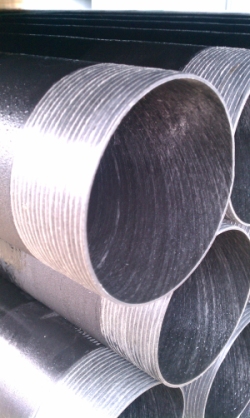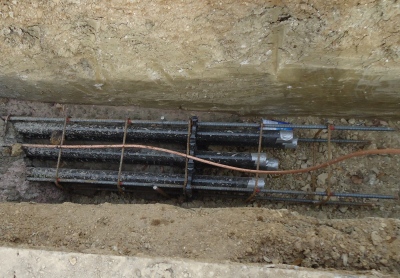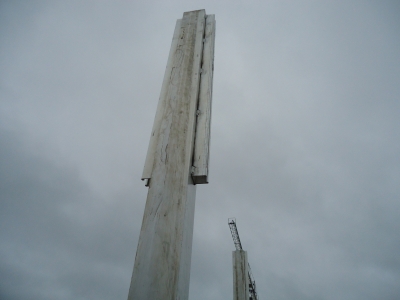 by Joey Valladarez, div30e
by Joey Valladarez, div30e
One thing that you learn very quickly about Water and Wastewater work is that the materials used are not your ordinary electrical parts and pieces.
From PVC coated aluminum conduit to 316 Stainless Steel Hardware and junction boxes, the cost of materials on one of these projects can be overwhelming. The specifications have to be scoured to find some of these items and it takes some getting used to.
- 4” expansion/deflection couplings at $350 each.
- 316SS NEMA 4X 12”x12”x6” j-boxes at $300 each.
- 316SS Unistrut at $8 per foot.
- Rebar enforced/concrete encased ductbank when concrete is $90 per yard.
- And the list goes on.
On the Wylie ozonation project, the materials used are even more unique. Fiberglass conduit is about 3 times the price of PVC and the fittings are some of the most expensive on the market. Need a ¾” female adapter? That will cost $35 for one. The epoxy required to connect it is $100 per tube. Fortunately our purchasing agent, Noel Cummings, had all of this data ready for our estimators prior to the bid. in some cases. The owner, NTMWD, has mandated that fiberglass conduit be used in all underground applications. While fiberglass conduit is not new to the trade, it has not been used on a water project in Dallas until now.

But that is where the known piece ended. Since we did not have the experience with the product we elected to sub out the majority of this work to reduce the risk associated with the uncertainty of the labor it would take to install it.
It turns out that fiberglass conduit, although marketed as a similar install to PVC, is far from it. It is difficult to bend, doesn’t cut well, and takes 2 hours to cure before it can be put into the trench.
Now that we know what it takes from watching our sub and some practice of our own, it gives us the data needed to accurately bid it on future projects should we decide to perform it ourselves.

Another unique piece to this project is all-aluminum conduit supports that were detailed in the drawings. These supports are run along sidewalks and had to be tall enough (11’) to allow personnel to walk under the conduit once installed.
Once again, Noel Cummings took the bull by the horns. Since there is no such support on the market, he worked closely with a custom metal shop, to produce a high quality support that meets the specification. The owner was so impressed with them that they are thinking of making them a standard for this application.
Although these material challenges arise, our team is always striving to find a way to meet the specification and do it in a cost effective way. Noel Cummings leads that charge and is a key player that is committed in keeping our material costs within budget.
